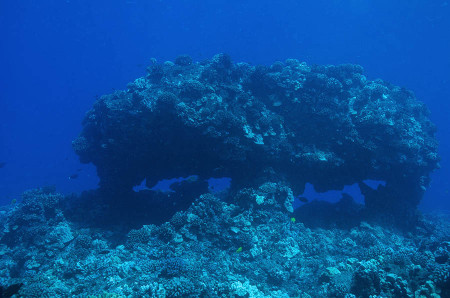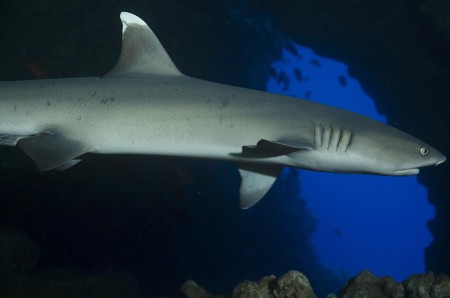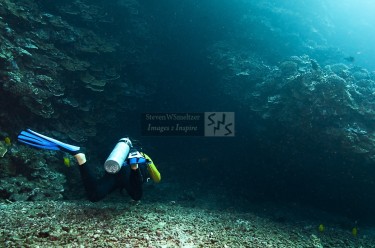Knob Hill is an interesting and very nice dive site. It is fairly shallow about 55 to 60 feet (16 to 18 meters) and teeming with life.

However, it is often not possible to dive on this site due to strong currents . Knob Hill is just off the coast of Lanai by the Four Seasons Hotel. Knob Hill’s name comes from a large rock formation near the surface that is supported by four columns. This is a large dive site on the south side of Lanai that is quite exposed. While, I have been diving around Lanai for 12+ years I have only been on this site three or four times.
Rating = 3.86 out of 5
- Visibility – moderate to very good
- Access – Moderate; boat only and 45 to 50 minutes from Lahaina Harbor
- Current – moderate strong most of time
- Depth to 60 ft / 18 m
- Reef health Hard / Soft Corals – Very Good
- Marine species variety – Very Good
- Pelagics / Mammals / Turtles / Rays – moderate to good, typical at least 1 to 3 sightings up close, sometimes many more
The only reason Knob Hill is not rated higher, is the current makes it a very difficult dive site to dive 80% of the time. Correspondingly, if the current is mild this is an awesome site.
Knob Hill Overview

Knob Hill has a number of swim-throughs and volcanic structures, such as the “table” above that make the site quite interesting. The marine life on the site is varied and abundant. As a matter of fact, you will almost always find large schools fish. These schools typically consist of Pennant Butterflyfishes, Dascyllus, Yellow Tangs, Sea Turtles, White-tip Reef Sharks, various eels and much more. Once the boat is on the mooring at Knob Hill, the dive master make take you on several different routes around this expansive dive site. Due to the current and infrequent visits by divers, the hard coral here is quite healthy. In addition, there is a nice swim through / cave where you can frequently find White-tip Reef Sharks. Furthermore, you can also see quite a few nudibranchs on this site and rare species such as the endemic Yellow-striped Coris and Reticulated Butterflyfish.

In addition, Knob Hill has a nice swim through on the site where you can many times find White-tip Reef Sharks. In fact, this shark, in particular, was quite curious and swam with me through the swim through. He even gave me a nice profile. 🙂
Follow my blog page Hawaiian Dive Site Reviews, to read reviews of other great dives in Hawaii.
Visit my website for other underwater photographs and/or follow me on Twitter.
The pool is open…..






